Voters’ names missing, a two-month election: India deserves a better EC
5052014
Voters’ names missing, a two-month election: India deserves a better EC
First Post By Prof R Vaidyanathan On May 4, 2014
The 2014 elections are coming to a close and praise for the world’s largest democracy conducting peaceful elections has been heaped on India, by most of our own media. The Election Commission also pats itself on the back for the massive task undertaken and pretends that all is well.
This time however, the election commission has not carried itself with any glory. Rather, it deserves brickbats for its commissions and omissions.
Duration & Timing
First is the duration of elections. I have never seen any LS election in India conducted over such a long period. Without any of the modern technology/communication facilities etc, in the eighties, it used to be over in less than a fortnight. Now the commission has extended it to more than two months. Its notification on 5th March initiated the so-called Model Code of Conduct which ends after the completion of all polls on 15th or 16th May, depending on re-polls.
Of course it has been partly relaxed in states where polling is over. On the whole, for nearly two months, all government activities have come to a standstill due to these “innovative” polls. Of course one can argue whether the government is “active” at other times.
The reasons given for such a long polling period is security and a fool proof success of our democratic exercise as if earlier elections were all failures. At this rate next time EC will extend polling to one year so that it is without any blemish.
It is really bizarre and crazy that in these times of instant communications and electronic voting, the election commission needs more than ten days to do a poll. In fact, the southern parts of India and most of the Western regions do not face any major problems of polling. The possible problem areas are Bihar/Eastern UP and WB and J&K and North East. Instead of focusing on these areas and also mobilizing more security forces if needed, the EC has opted for a lazy and easy solution of stretching it to two months.
In the process many important decisions/tasks have not been carried out by Government departments stating model code of conduct as an excuse. For instance in Karnataka there have been accidents involving Volvo buses resulting in large scale deaths in the last few months. The demand for an emergency exit to be fixed in all such buses began to be accepted –rather reluctantly by private and Government bus operators. But news items suggest that the process of fitting emergency doors have been postponed due to model code of conduct.
Also timing has not been appropriate. For instance in Bangalore the polling day was sandwiched between many holidays giving rise to voters not exercising their vote due to travel etc.
Electoral Rolls
The basic dharma of the election commission is to have proper electoral rolls and see that all eligible voters are able to exercise their franchise without any difficulties. But unfortunately the EC has failed in that duty. The important task is to integrate State Assembly rolls with LS rolls since in places like Bangalore where people have voted in recent Assembly polls found their names missing in the LS poll lists. In places like Mumbai and Pune largescale deletions have taken place and some 5 to 6 lakhs people could not exercise their franchise and election commissioner expressed his sorry for that.
Involving common people
The involvement of common people in elections is a must in ensuring a proper participatory democracy in a country such as India.
The Election Commission’s zeal to enforce the code of conduct may make for discipline and rigor in the conduct of polls, but it has put a host of small traders out of business. This not only keeps people in the dark about the candidates but also alienates the very people who make up the democracy.
The Election Commission’s zeal to enforce the code of conduct may make for discipline and rigor in the conduct of polls, but it has put a host of small traders out of business. This not only keeps people in the dark about the candidates but also alienates the very people who make up the democracy.
Elections are festivals of our democracy. It is time to celebrate the power of the ordinary and the importance of the lowest of the low.
Newspaper reports suggest that the officials of the Commission have seized saris and utensils meant for distribution to the voters by some of the candidates. Those are considered as ‘bribing to get votes’. But if the same candidate or his political party promised to provide every individual with free saris or TVs or power that is seen as an electoral manifesto.
In other words, the system accepts and encourages bribes to be given from the public exchequer but not from private initiatives and wealth. Also, future bribes seem to be preferable to present bribes, according to the Code. A slum-dweller would be happier to receive some utensil or sari at the door-step today than get it later through leaky and slow governmental processes.
When so many freebies can be promised and offered from the public treasury by political parties, why not encourage free gifts from candidates? Maybe it can be done in a transparent way, if that is the issue. A register or log-book can be maintained about the donations of an individual candidate. And, anyhow, the voting process is secret. Why deny the poorer segments their due during this “festival” called elections?
Ignorance about candidates
The sanitized electoral process has some negative aspects that require a national debate. The names of the candidate are not known to many common people belonging to the poorer segments. In the past, supporters used to shout in a coarse voice (from an auto-rickshaw, and using a mounted microphone and speakers) the names of the candidate and sing songs to praise his achievements while requesting voters to consider his case.
There used to be hand-bills; wall paintings and other types of information. The involvement of common people is a must in ensuring a proper participatory democracy in a country such as India. We often read of officials talking about information being available on the Internet, etc., in a State where the literacy rate is average and computers are used by a small minority. Even on such media, one rarely finds any weighty discussion on the merits of a candidate other than in party terms.
In any case, the importance of elections in our country is to re-instate and re-establish the organic links between the have-nots and the process of democracy. By over-stressing the Anglo-Saxon model of behavior we are possibly throwing the baby out with the bath-water.
The excesses by political parties during the 1980s and the 1990s were condemned by all and, as a reaction; a regulatory system was put in place. But the pendulum ought not to swing to the other extreme so that people are alienated from the process itself.
The excesses by political parties during the 1980s and the 1990s were condemned by all and, as a reaction; a regulatory system was put in place. But the pendulum ought not to swing to the other extreme so that people are alienated from the process itself.
Let us not have a large disconnect between the common people and participatory democracy, where we strip participation down to a mechanical visit to the polling booths.
Let us bring back the festive zeal of the multi-hued sound, fury and chaos of the road-side shows. That is the thriving democracy among the poor but dignified people.
Let us not try to impose artificial European-type elections with a funereal atmosphere on the noisy but joyful and colorful Indian public. Our elections ought to be like a kumbha mela with all its pomp and revelry and free food, and not like a dark-suited solemn procession behind a carved casket. We perhaps deserve a fun-loving EC than a funeral undertaker.
Let us bring back the festive zeal of the multi-hued sound, fury and chaos of the road-side shows. That is the thriving democracy among the poor but dignified people.
Let us not try to impose artificial European-type elections with a funereal atmosphere on the noisy but joyful and colorful Indian public. Our elections ought to be like a kumbha mela with all its pomp and revelry and free food, and not like a dark-suited solemn procession behind a carved casket. We perhaps deserve a fun-loving EC than a funeral undertaker.
(The writer is Professor of Finance at IIMB. The views expressed here are personal.)
____________________________________________
R.VAIDYANATHAN
PROFESSOR OF FINANCE
INDIAN INSTITUTE OF MANAGEMENT
BANNERGHATTA ROAD
BANGALORE
INDIA –560076
TEL: 91-80-2699-3086
FAX:91-80-2658-4050
e mail:vaidya@iimb.ernet.in
Edit : Edit
Comments : Leave a Comment »
Categories : Uncategorized
5052014
 | ||||||||||||||||||||||||||||||||||||||||||||||||||||||||||||||||||||||||||||||||||||||||||||||||||||||||||||||||||||||||||||||||
|
Edit : Edit
Comments : Leave a Comment »
Categories : Uncategorized
Quake of M6.1 – SOUTH OF THE FIJI ISLANDS
5052014| Magnitude | 6.1 |
| Date-Time |
|
| Location | 25.798S 178.208E |
| Depth | 610 km |
| Distances |
|
Edit : Edit
Comments : Leave a Comment »
Categories : Uncategorized
Quake of M6.6 – SOUTH OF THE FIJI ISLANDS
5052014| Magnitude | 6.6 |
| Date-Time |
|
| Location | 24.642S 179.084E |
| Depth | 527 km |
| Distances |
|
Edit : Edit
Comments : Leave a Comment »
Categories : Uncategorized
Bangladesh Migrants a Threat to India
5052014
Please join us for tea at 5.30 pm.
A line in confirmation shall be highly appreciated.
Edit : Edit
Comments : Leave a Comment »
Categories : Education, Media, Politics
“Thoughtful Leadership Lecture and Interactive session”
5052014
CIN: U99999DL1956NPL002635
Rajpal Singh
Director and Head
Youth Affairs & Sports, Skills Development (International) &
Postal Reforms & Labour and Employement
May 5, 2014
Dear Sir / Madam,
FICCI is pleased to invite you for the “Thoughtful Leadership Lecture and Interactive session” on Corporate Athlete Goal in Sports by world renowned tennis coach Mr. Adrian Rattenbury, Founder & President, RPT Tennis, Spain. This programme is being organized in collaboration with RPT Tennis, Spain and Games Unlimited. Details are as follows:
When and Where:
Monday, May 12, 2014, 2.45 pm
Conference Room- 2nd floor, Federation House,
FICCI, Tansen Marg
New Delhi – 110001
Program:
2:45 p.m. Welcome Remarks by FICCI.
2:50 p.m. Lecture by Mr. Adrian Rattenbury, Founder & President, RPT Tennis, Spain
3:55 p.m. Vote of Thanks
2:50 p.m. Lecture by Mr. Adrian Rattenbury, Founder & President, RPT Tennis, Spain
3:55 p.m. Vote of Thanks
I therefore cordially invite you to join us for this important event as a special invitee and learn how sports have transformed into a big industry and is not just about entertainment.
Request you to kindly send a line of confirmation to my colleague Amit Mantri at amit.mantri@ficci.com Contact no.- 011-23487561/283/ +91- 9818817375.
Please find attached a brief profile of Mr. Adrian Rattenbury for your reference (click on the hyperlink to download profile &Photo).
With best regards,
Yours sincerely,

(Rajpal Singh)
Edit : Edit
Comments : Leave a Comment »
Categories : sports
“On joue sur la terre”
5052014
Jean-Philippe Bottin
To Jean-Philippe BottinMe
Today at 3:49 PM
Dear friends,
To Jean-Philippe BottinMe
Today at 3:49 PM
Dear friends,
You will find below and in attachment the presentation of our next event: the opening of an exhibition created by Alliance Française de Delhi who took part in the worldwide photo competition organized by Fondation Alliance Française, in Paris.
The title and theme of the competition is “On joue sur la terre” (The earth is our playground). And you will be able to watch the photographs of our 20 competitors. A beautiful vision of a playful world! Not to be missed again!
Have a lovely week!
Jean-Philippe.
Jean-Philippe Bottin
Directeur, Alliance Française Delhi
Délégué Général Inde Népal, Fondation Alliance Française
72 Lodi Estate, New Delhi 110 003, India
Directeur, Alliance Française Delhi
Délégué Général Inde Népal, Fondation Alliance Française
72 Lodi Estate, New Delhi 110 003, India
Indian mob: (91) 9560004641 (also reachable on Whatsapp and Viber)
French mob: (33) 618593520 (also reachable on Whatsapp and Viber)
Skype: jeanphilippebottin
Twitter: @JPBottin
French mob: (33) 618593520 (also reachable on Whatsapp and Viber)
Skype: jeanphilippebottin
Twitter: @JPBottin
Alliance Française de Delhi
presents
On Joue Sur La Terre
A photography Exhibition
by the participants of the AFD Photo Competition 2014
A photography Exhibition
by the participants of the AFD Photo Competition 2014
Preview on Wednesday 7th May 2014, 7pm
Exhibition-on-view from 8th to 21st May 2014, 9am to 8pm
Exhibition-on-view from 8th to 21st May 2014, 9am to 8pm
Galerie Romain Rolland, Alliance Francaise de Delhi
72 Lodi Estate, New Delhi-110003
72 Lodi Estate, New Delhi-110003
This exhibition is the result of a Photo competition organized by Alliance Française de Delhi — On joue sur la Terre — “The World is the Playground” with the support of Fondation Alliance Française
It will showcase first 36 Best Photographs (printed by Alliance Française de Delhi).
The theme of the exhibition is to showcase the games often played in many social and cultural functions (board games, gambling, video games, outdoor games, children’s games, sporting events, etc.). This collection of various photographs in different moods clicked by emerging talented people portrays a collage of playful feelings of society. This exhibition will become a platform to learn about the evolution of the playful customs in the world and had given an opportunity to all the photography lovers to showcase their talent world-wide.
Photographers have used their cameras to explore the faces of friends, loved ones, passing strangers etc.
It will showcase first 36 Best Photographs (printed by Alliance Française de Delhi).
The theme of the exhibition is to showcase the games often played in many social and cultural functions (board games, gambling, video games, outdoor games, children’s games, sporting events, etc.). This collection of various photographs in different moods clicked by emerging talented people portrays a collage of playful feelings of society. This exhibition will become a platform to learn about the evolution of the playful customs in the world and had given an opportunity to all the photography lovers to showcase their talent world-wide.
Photographers have used their cameras to explore the faces of friends, loved ones, passing strangers etc.
On joue sur la Terre features the photographs worth a thousand words. The brilliancy and sharpness of some of them are highly remarkable. The photographers have tried their best to share their visual experience by every possible means. The best images are the ones that retain their strength and impact over the years, regardless of the number of times they are viewed.
Photography as a powerful medium of expression and communications offers an infinite variety of perception, interpretation and execution. All the photographers are spreading some kind of feeling/emotions. That is why we say “Photography is an art of observation. Its about finding something interesting in an ordinary place…”
For further information please write to communication@afdelhi.org
2 AttachmentsView allDownload all
Reply, Reply All or Forward | More
Reply, Reply All or Forward | More
Edit : Edit
Comments : Leave a Comment »
Categories : Uncategorized
Cancer Awareness in the field of IMRT
5052014
Cancer of the mouth and throat are the most common cancers in Indian males, because of the high incidence of smoking and chewing tobacco and the widespread use of pan masala. In fact, the diasporic Indian population has even led to an increase of cancer of the mouth in the Western world!
Cancer of the mouth usually presents as an ulcer on the cheek, gums or tongue and any blister / ulcer in these areas persisting for more than three weeks, warrants a visit to a doctor. The symptoms of throat cancer are a foreign body sensation in the throat, change in voice, painful swallowing persisting for three weeks. Both mouth and throat cancer may also manifest simply as a lump in the throat.
Radiotherapy is the treatment of cancers using x rays or other forms of electromagnetic rays that have the ability to destroy tissue by damaging the DNA of cells.
Radiotherapy is an integral part of the treatment of head neck cancer, having the ability to destroy cancer in this site, thus curing cancer of the mouth and throat. The probability of cure is excellent, with more than 90 % early vocal cord cancer patients getting cured and up to 70 % stage III and IV A patients getting cured.
Modern radiation techniques have led to a dramatic improvement in the quality of life of cancer patients undergoing radiotherapy. A technique called Intensity Modulated Radiotherapy, in use for a little more than a decade, has resulted in this dramatic change. This technique allows the radiation oncologist to target the cancer accurately and yet reduce the radiation dose to normal structures adjacent to the cancer.
Patients treated for head neck cancer without using IMRT have to change their diet to a liquid or porridge like diet, often also losing the ability to taste food forever. They also develop a permanently dry wood like mouth, being troubled by oral blisters and bad teeth.
Dr. Sapna Nangia, Cancer specialist at the Indraprastha Apollo Hospital, New Delhi, who has been working in the field of IMRT in mouth and throat cancer for more than a decade and has vast experience in this field, says that in contrast, patients treated with IMRT quickly regain normal taste and salivary function and have a good quality of life. They are also less likely to have dental problems following radiotherapy. Since dose to all normal structures is reduced with this treatment, there are fewer blisters during treatment, and less chance of scarring or damage to the jaw bone.
Dr. Nangia feels strongly that in the interest of patients suffering from mouth and throat cancer , radiotherapy , whether being used alone or in combination with surgery or chemotherapy, should always be in the form of Intensity Modulated Radiotherapy. She feels that primary physicians, dental surgeon and ENT surgeons, who are often the people who first diagnose cancer of the mouth and throat, need to be aware of this advanced form of radiotherapy, so that they can guide their patients correctly. The general public , too, should be aware of the latest advances in the field of cancer treatment, a field in which rapid advances are taking place and which are available in India at the same time as they are in the western hemisphere.
Edit : Edit
Comments : Leave a comment
Categories : Uncategorized
The life and writing of Giani Ditt Singh/Sant Ditta Ram’
5052014
Nehru Memorial Museum and Library
cordially invites you to a Seminar
at 3.00 pm on Wednesday, 7th May, 2014
in the Seminar Room, First Floor, Library Building
on
‘Living and Defining Caste:
The life and writing of Giani Ditt Singh/Sant Ditta Ram’
by
Dr. Anshu Malhotra,
Abstract:
This presentation explores the protean stances on the idea of caste among the Sikh reformers of the Lahore Singh Sabha in the late nineteenth century through reading the life and writing of Sant Ditta Ram, later Giani Ditt Singh. Though Singh was from a Ravidasi background, and his career reflected his desire to overcome the debilitations associated with it, he could not advocate an unequivocal stand on caste. Looking at his changeable discourse on caste the presentation discusses his different readings of the institution and the reasons for such vacillations. In the context of the contemporary debate on caste among Sikhs, and as dalit assertion takes place in the Indian Punjab, the ideas of a dalit Sikh will illuminate the period of history when caste and community identities were being reformulated.
Speaker:
Dr. Anshu Malhotra teaches in the Department of History, University of Delhi, Delhi and is currently a Fellow, Nehru Memorial Museum and Library.




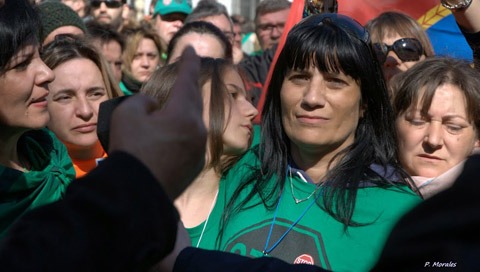
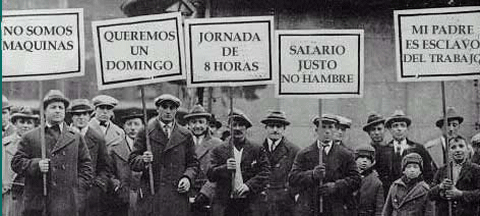
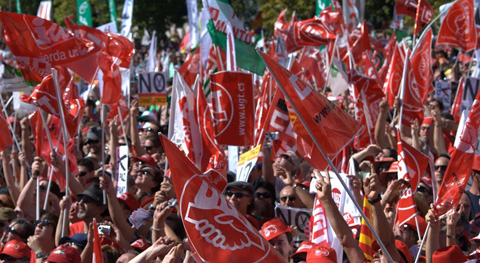
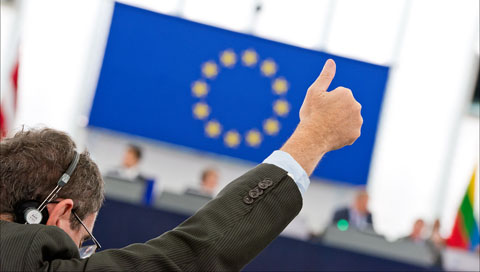
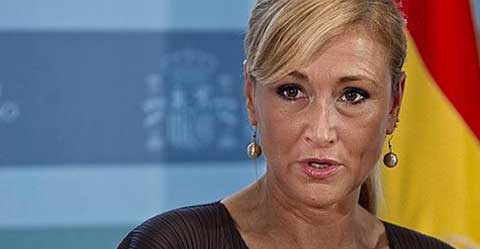
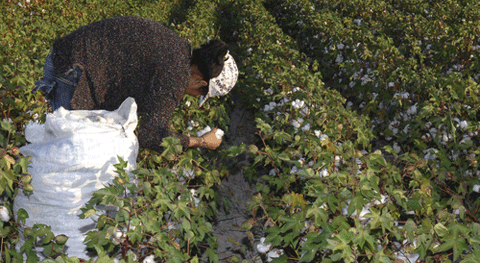
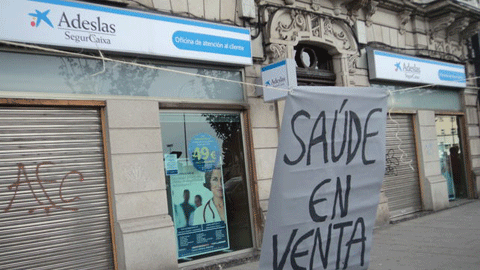


No comments:
Post a Comment